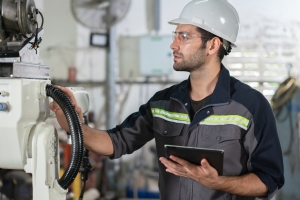Ways Commercial Packaging Has Changed Over the Years

Packaging—it’s everywhere you look. From the toothpaste you used this morning to the laptop you’re currently typing on, packaging is an inescapable part of our daily lives. The way businesses present their products to consumers can make the difference between a sale and a pass, which is why the evolution of commercial packaging is a story that deserves attention. Here’s a look at how it has transformed, and why it matters.
Materials in Commercial Packaging
In the not-so-distant past, commercial packaging was a straightforward affair. Cardboard, paper, glass, and metal were the primary ingredients. But modern times have brought about a cavalcade of materials, each with their unique selling points. Plastics introduced a new era of flexibility and cost-effectiveness, but they also presented environmental challenges. Today, we’re witnessing an upsurge in sustainable materials like bioplastics, mushroom-based packaging, and edible wrappers. These materials offer promising alternatives to conventional packaging while also addressing growing concerns about sustainability and waste reduction.
Labeling Techniques
The early days of commercial packaging saw limited labeling options. Hand-painted designs and printed labels were the norm. Now, modern markings like QR codes and barcodes offer more than just basic information; they provide an interactive experience.
These digital-friendly markers connect consumers to additional product details, reviews, and marketing campaigns. Smartphones have turned packaging into a gateway to a wealth of content, making the purchasing decision easier and more informed for the tech-savvy shopper.
Ensuring Product Safety
Safety has always been a major concern for packaging, but the methods for ensuring product security have undergone significant overhauls. Historically, regulations were more relaxed, and the onus was largely on the consumer to be vigilant. Today, however, rigorous safety standards and advanced technology work together to minimize risks. Packaging is now engineered to protect against tampering and contamination, making it an essential barrier between consumers and potential harm.
Sustainability Practices
Past packaging practices often came with heavy environmental costs. Today, there’s a robust, global push toward sustainable packaging solutions. It’s no longer enough for packaging to merely protect goods; it must do so while causing the least harm to the planet. Companies now invest in sustainable materials and manufacturing processes in the hopes of developing a richer, more eco-friendly image.
The evolution of commercial packaging showcases not just the ingenuity of manufacturers but also a growing emphasis on consumer experience and environmental responsibility. These shifts in materials, labeling, safety, and sustainability practices are examples of the industry’s commitment to staying relevant and beneficial. It reaffirms that the only constant is change, and when it comes to packaging, it’s a change for the better.





